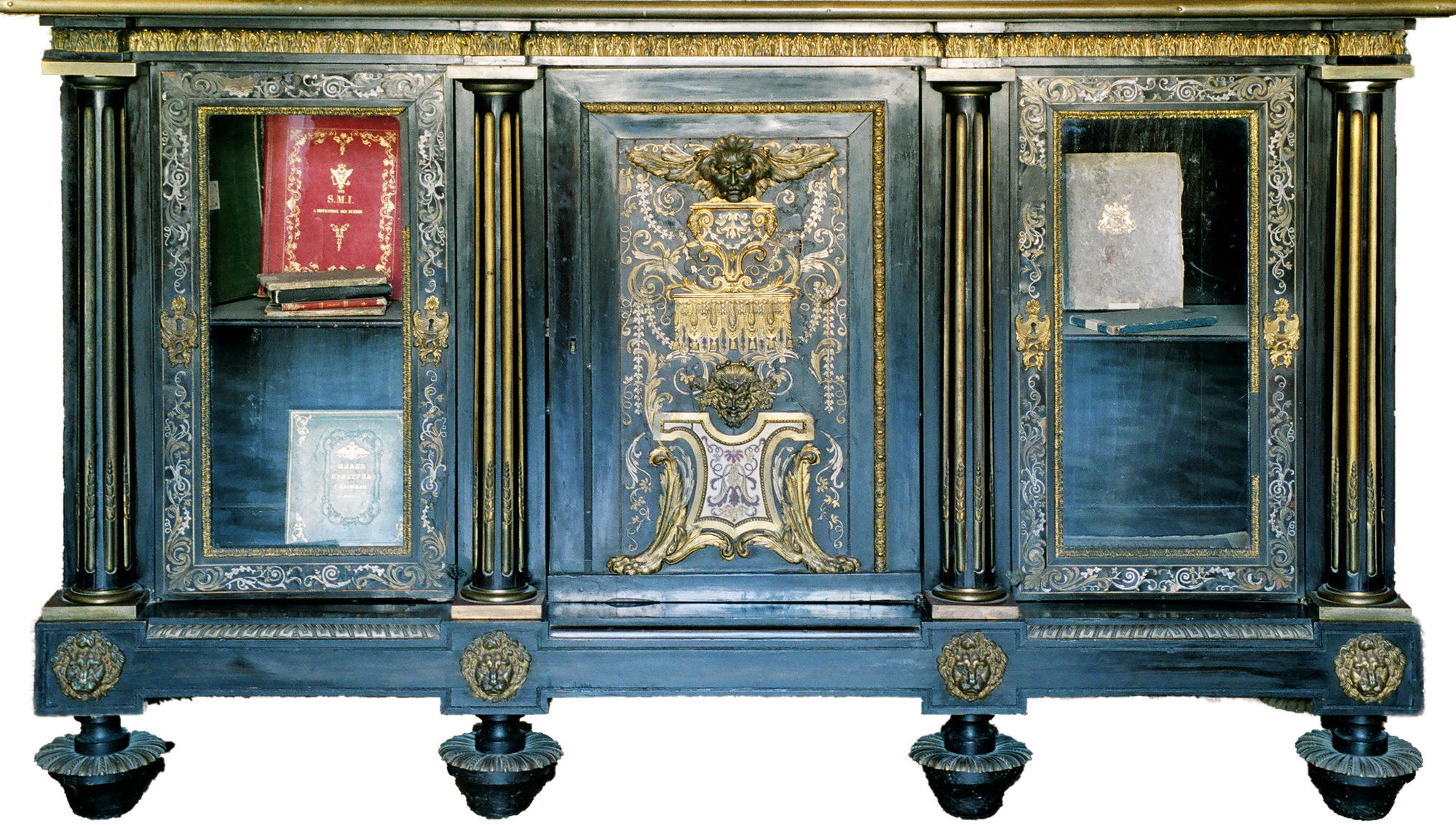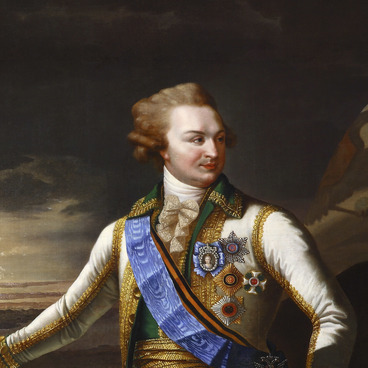Pomp palace furniture with incrustation from the epoch of Louis XIV is known as ‘Boulle’ style furniture.
In the 70s of the 17th century, King Louis intended to create a residence that would outshine the brilliance of all royal palaces in Europe. It was decided to move the King’s quarters to Versailles. The conversion of Versailles was carried out by eminent masters, but it was necessary to take care of the creation of furniture.
In 1672, the painter André Charles Boulle was appointed to a position of a royal furniture master of Louis XIV, and he was also granted a residence permit in the Louvre.
At the age of twenty-two Boulle already had the rank of master. After the death of royal carpenter Jean Masé, Boulle became a head of workshops in the Louvre. In 1679 he expanded the workshops and increased the quality and artistic level of produced furniture.
The hallmark of the master’s style was a skillful inlay in the ‘marquetry’ technique. The ‘Boulle’ style Marquetry is decoration of the furniture with copper inserts mounted into a tortoiseshell. Boulle 's technique implied that plates of different materials (such as metal and turtle shell) were placed on top of one another and compressed together. After that the upper plate was carved with a knife according to the pattern. Connecting the elements of the pattern cut from the upper plate with the elements of the background cut from the lower plate, the artist received interlaced patterns of lustrous metal with turtle shell in the background.
Many items of Boulle 's setting were made in pairs: on one used copper-turtle Marquetry, and on the other Marquetry with the opposite pattern, that is, a shell of turtle in copper.
Sometimes both types of Marquetry were applied on the same subject, and conditionally divided into male and female type. The Marquetry drawing most often included a flower-plant ornament.
In the collection of the Alupkin Palace there is a book cabinet in ‘Boulle’ style. The black wood closet itself, which serves as a background for the Marquetry of bronze, metal and turtle shell. It shows four facing forward columns, with capitals and bronze bases.
The closet has three doors, the central door is decorated with leaves ornament, which are stylized grape leaves, the two side doors of the closet are made of glass. The pattern on the closet is complex, the friso is decorated with bronze. The top board is covered with black polish. The cabinet is put on eight rounded legs, each leg has a capital of gilt bronze.
Side walls of cabinet have decorations made of strips of metal. It’s late “Boulle” style.
In the 70s of the 17th century, King Louis intended to create a residence that would outshine the brilliance of all royal palaces in Europe. It was decided to move the King’s quarters to Versailles. The conversion of Versailles was carried out by eminent masters, but it was necessary to take care of the creation of furniture.
In 1672, the painter André Charles Boulle was appointed to a position of a royal furniture master of Louis XIV, and he was also granted a residence permit in the Louvre.
At the age of twenty-two Boulle already had the rank of master. After the death of royal carpenter Jean Masé, Boulle became a head of workshops in the Louvre. In 1679 he expanded the workshops and increased the quality and artistic level of produced furniture.
The hallmark of the master’s style was a skillful inlay in the ‘marquetry’ technique. The ‘Boulle’ style Marquetry is decoration of the furniture with copper inserts mounted into a tortoiseshell. Boulle 's technique implied that plates of different materials (such as metal and turtle shell) were placed on top of one another and compressed together. After that the upper plate was carved with a knife according to the pattern. Connecting the elements of the pattern cut from the upper plate with the elements of the background cut from the lower plate, the artist received interlaced patterns of lustrous metal with turtle shell in the background.
Many items of Boulle 's setting were made in pairs: on one used copper-turtle Marquetry, and on the other Marquetry with the opposite pattern, that is, a shell of turtle in copper.
Sometimes both types of Marquetry were applied on the same subject, and conditionally divided into male and female type. The Marquetry drawing most often included a flower-plant ornament.
In the collection of the Alupkin Palace there is a book cabinet in ‘Boulle’ style. The black wood closet itself, which serves as a background for the Marquetry of bronze, metal and turtle shell. It shows four facing forward columns, with capitals and bronze bases.
The closet has three doors, the central door is decorated with leaves ornament, which are stylized grape leaves, the two side doors of the closet are made of glass. The pattern on the closet is complex, the friso is decorated with bronze. The top board is covered with black polish. The cabinet is put on eight rounded legs, each leg has a capital of gilt bronze.
Side walls of cabinet have decorations made of strips of metal. It’s late “Boulle” style.



